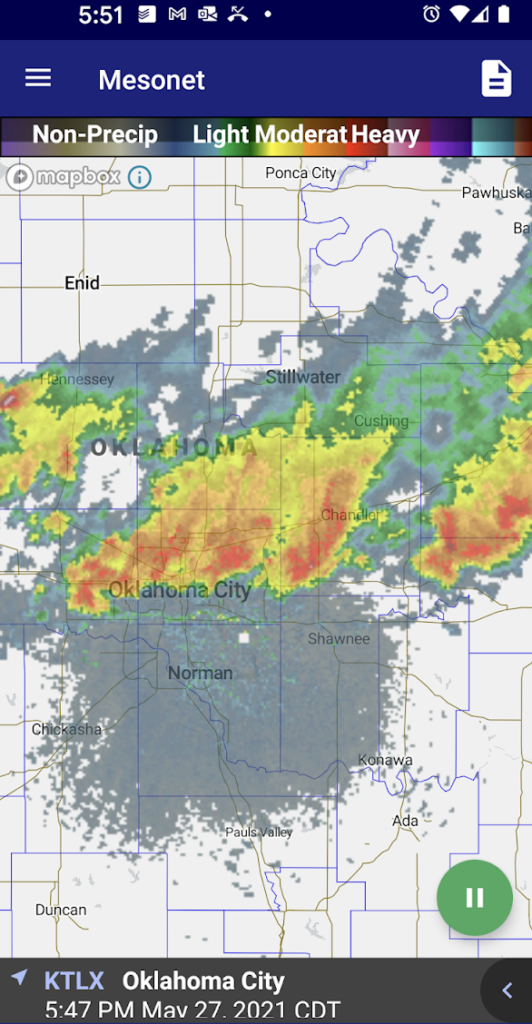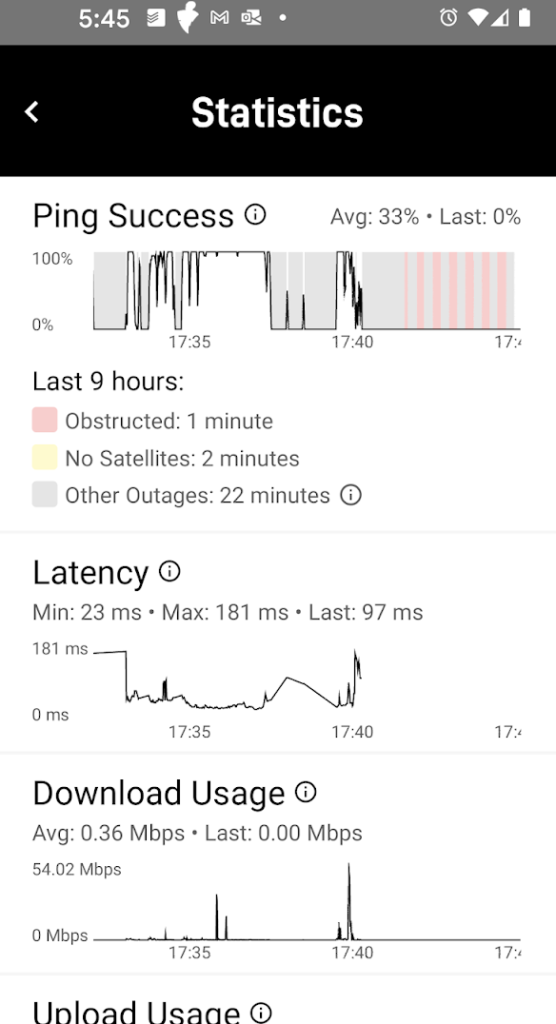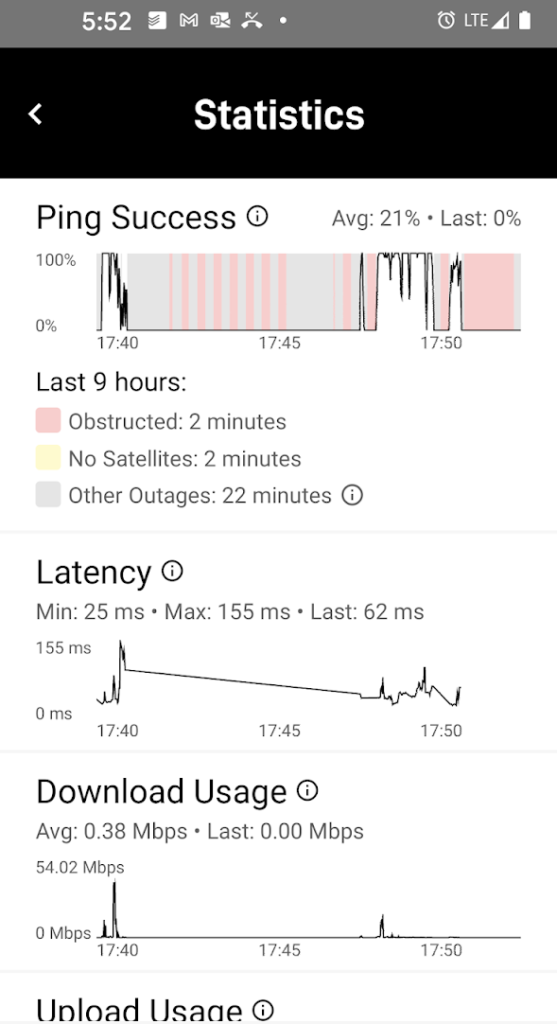2024 update
Yes, still using Starlink. It’s maybe the same price as a COX cable plan but it’s certainly more reliable. Starlink has been extremely reliable. My only complaint is that because the downlink is in various cities in Texas that is where my IP comes from.. so when I look at Home Depot or Lowes they always try showing me inventory from a local store somewhere in Texas. That’s been my only complaint.
2022 August update
Our service began failing to connect and after a power cycle it would reconnect. When it was connected the speed was a fraction of what it had been a year ago. I had to do this a few times in a few weeks and then it simply never reconnected to the cloud. It just kept saying connecting and rebooting. I opened a ticket with Starlink and they sent me a refurbished rectangle dish to replace my round one. The rectangle one is working great and after a week of living old school it’s nice to be able to steam and order things again!
Couple problems I had to overcome.
1. The new connector is a rectangular, proprietary USB C looking connector. This didn’t fit in my existing 1 inch conduit. So a quick swap-out ended up taking an entire day.
2. When I finally got it through all the 1 1/2 inch vent pipe, the attic space, and the kitchen wall to the router I found that I had bent it and it wouldn’t plug in! I should have cut a piece of PVC pipe to fit over it while running it through the walls. And like dishy before it, the supplied cable is attached and not removable from the dish so you start there and work your way in.
3. The new dish uses a different size of pipe for the mount so I had to buy another mount and find the roof rafter to mount to.. I left the old one on the roof as it’s not leaking so I’m leaving it in place.
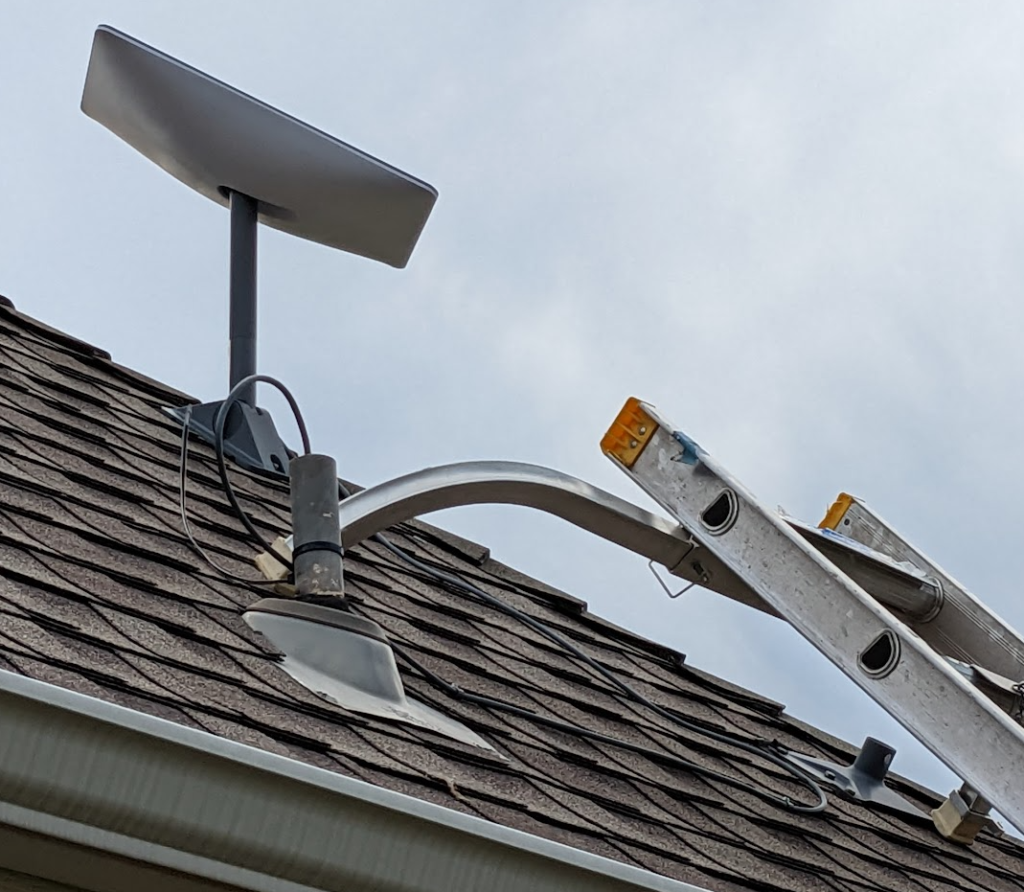
2021 April Starlink Beta!
I’ve always disliked AT&T for a variety of reasons and I never liked that I only had one other alternative here (COX). I was really excited a few years ago when Google announced they were going to install a fiber hub here and our neighborhood was going to be their first in OKC. They ran into setbacks and contention with the existing service providers protecting their right-of-ways from a fiber competitor. Shortly after the Governor announced a deal with COX, Googles plans for fiber evaporated. Fast forward a few years and Elon Musk has the Starlink beta program and I signed up in February 2021.
The one thing I don’t like with COX is that it’s on many utility poles and it goes through peoples yards and it was just too common to have an outage that lasted several hours. Also any time the power glitched, even with a UPS, there would be several thousand homes trying to reconnect simultaneously and it would be slow. Fiber may have been much better but there isn’t any here. It’s COX asymmetric service on coax or Bell’s DSL.
In April I received Dishy McFlatface which was a few months earlier than I anticipated. I could see there were periods in the orbits where I would not have service so I was surprised but willing to test. As advertised I had it connected in mere minutes. The speed tests were impressive. I tested it with and without my home router and I tested it with Dishy plugged into my router without their router. I also used it with Dishy connected to their router and that router connected to my router. I didn’t see any significant change but unless I connect my phone to the Starlink WiFi network I could not see the network statistics on the Starlink app. Also with their router connected to my router’s WAN port my home network switched from a 192.168 address to a 10.0.0.0 network. The Starlink statistics are stored in Dishy but Dishy doesn’t provide the WiFi of course so to get the statistics you have to use the Starlink router. So that is how I ultimately left it. Their router connects to my router and my phone is on the WiFi provided by the Starlink router. I also added a 650 VA UPS to power Dishy and the routers to prevent momentary power outages from causing a loss of signal. After a few weeks I was pleased enough I called COX and removed the Internet service plan.
May and June were a bit plagued by occasional outages when there wasn’t a satellite above my horizon however by August the loss of signal had become infrequent and much shorter. I can now be on Microsoft Teams calls all morning and not lose service (or very rarely loose service).
The only other issue I’ve witnessed is when a severe storm with a hail core or just really heavy rain is between my satellite and me. The storm scatters or absorbs the UHF/SHF low power satellite signals and we lose service. Fortunately it’s only for however long these very large storms are overhead – 30 minutes or so. When that happens I have to look at the radar on my 4G cell phone or turn-on the T.V.. so no big deal.
The service is quite fast with 38mS ping 117 Mbps download and 15 Mbps upload, and sometimes better, sometimes worse but while I was on COX at best I was 58 Mbps and 3 Mbps. With Starlink I’ve seen 120 Mbps / 20 Mbps at times but i’ve stopped my frequent checking.
I’m really happy with it and the price is in line or better than the competition. Since April there have been (2) 1-hour outages where Starlink was tinkering with the network, but it is still a ‘beta’ product.
Here you can see on the COX Preferred100 plan I was seeing 45 Mbps / 4.4 Mbps asymmetric.
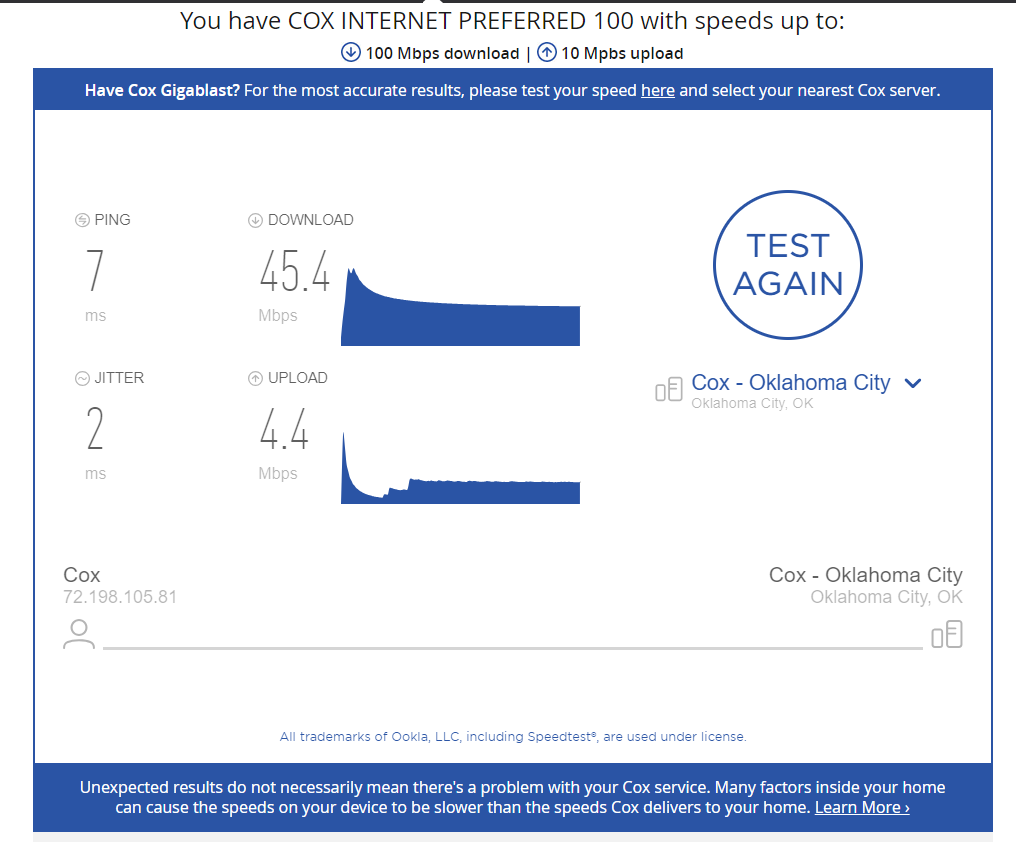
Earlier in the year when I was on COX Essential 30 plan I was seeing 36 Mbps / 3 Mbps.
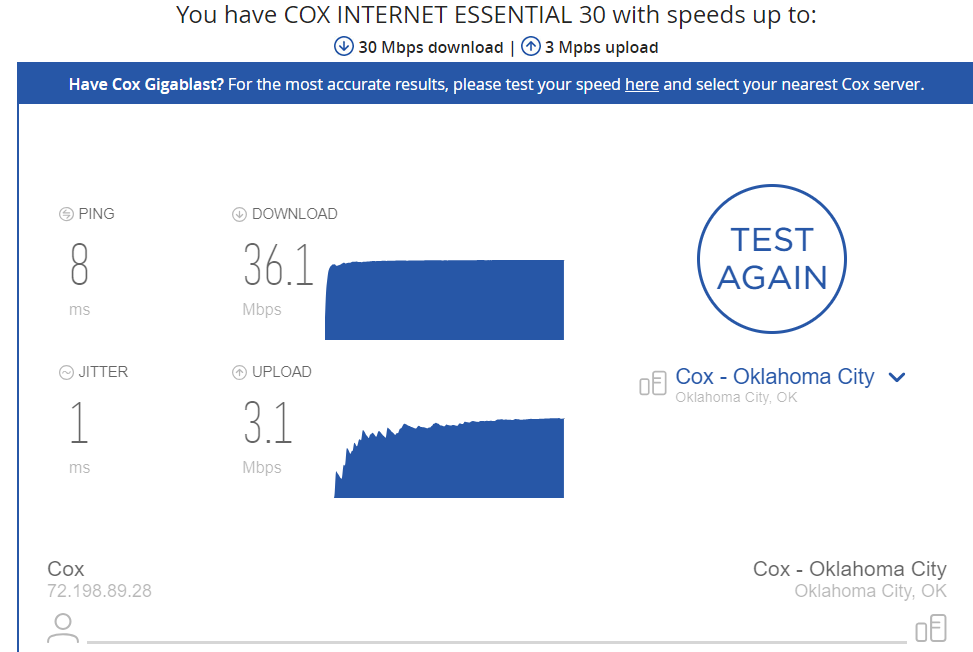
After switching to Starlink I could receive much better asymmetric download and upload speeds from my home on Starlink to COX and OneNet’s test servers (same server used in previous tests).
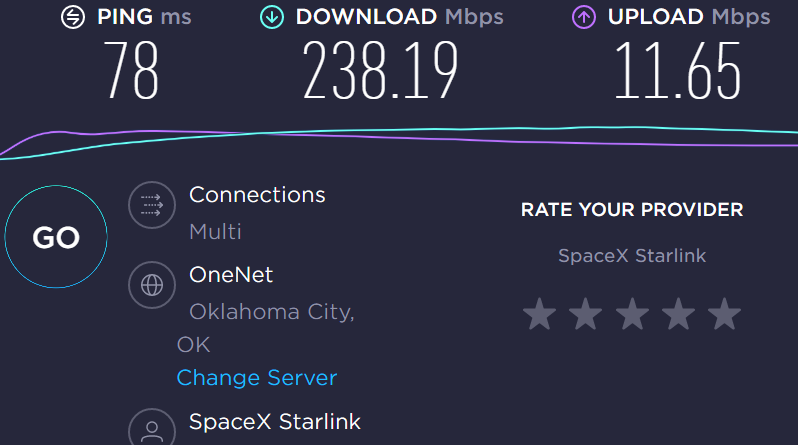
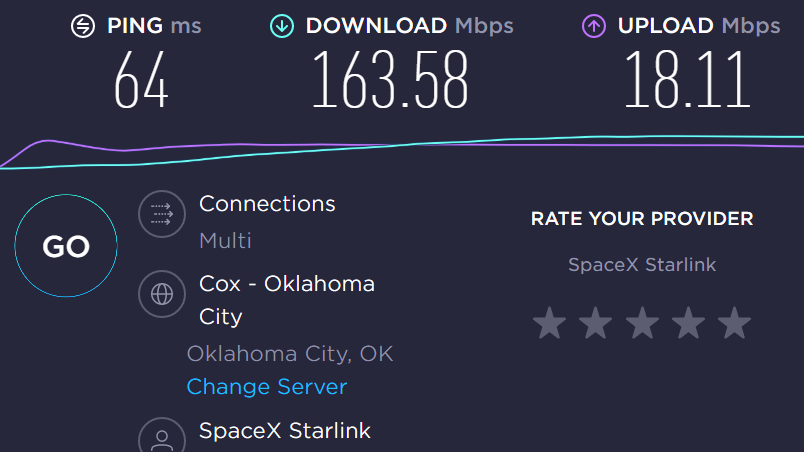
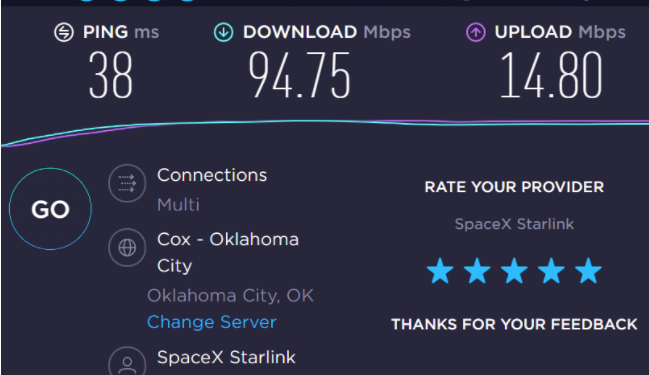
Thus when I’m sending an e-mail with attachments or adding something to my Google Drive or a web site it uploads a LOT faster.
I mounted Dishy on the North corner of the house allowing it to view N, W, and East. South is blocked by my roof and some of the NE. is blocked by the adjacent house.
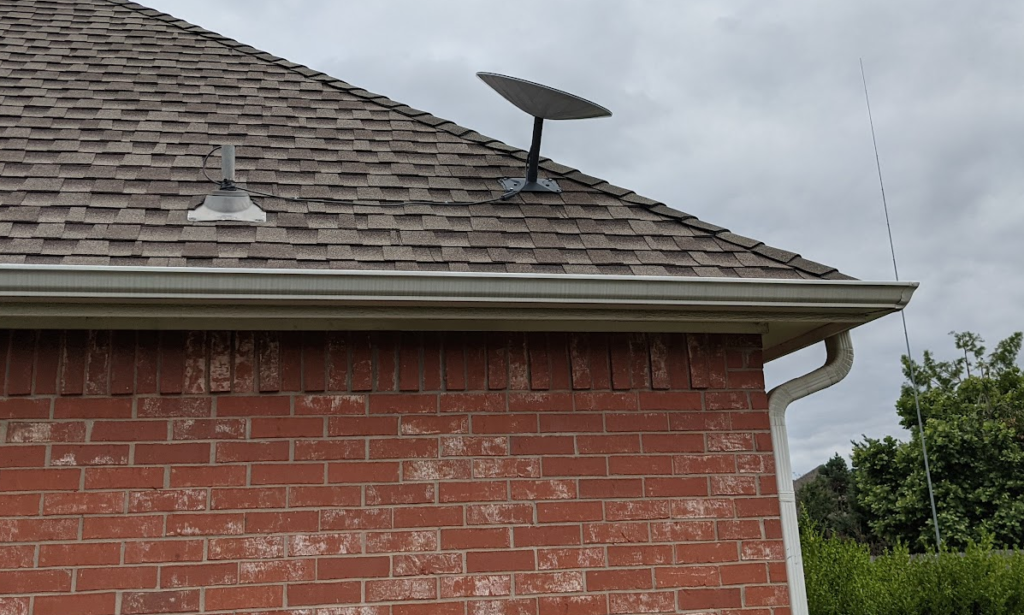
Here you can see the radar of a storm that caused a loss of signal for about 30 minutes. Loss of signal occurred around 5:30 PM and by 6:05 PM it was stable again.
